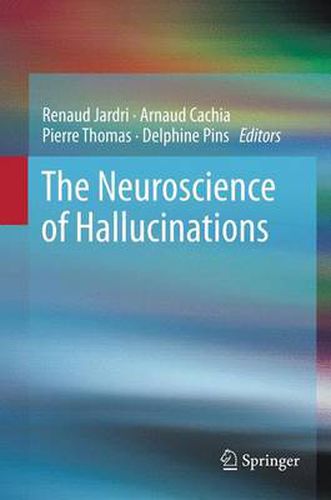Readings Newsletter
Become a Readings Member to make your shopping experience even easier.
Sign in or sign up for free!
You’re not far away from qualifying for FREE standard shipping within Australia
You’ve qualified for FREE standard shipping within Australia
The cart is loading…






This title is printed to order. This book may have been self-published. If so, we cannot guarantee the quality of the content. In the main most books will have gone through the editing process however some may not. We therefore suggest that you be aware of this before ordering this book. If in doubt check either the author or publisher’s details as we are unable to accept any returns unless they are faulty. Please contact us if you have any questions.
Hallucinatory phenomena have held the fascination of science since the dawn of medicine, and the popular imagination from the beginning of recorded history. Their study has become a critical aspect of our knowledge of the brain, making significant strides in recent years with advances in neuroimaging, and has established common ground among what normally are regarded as disparate fields.
The Neuroscience of Hallucinations synthesizes the most up-to-date findings on these intriguing auditory, visual, olfactory, gustatory, and somatosensory experiences, from their molecular origins to their cognitive expression. In recognition of the wide audience for this information among the neuroscientific, medical, and psychology communities, its editors bring a mature evidence base to highly subjective experience. This knowledge is presented in comprehensive detail as leading researchers across the disciplines ground readers in the basics, offer current cognitive, neurobiological, and computational models of hallucinations, analyze the latest neuroimaging technologies, and discuss emerging interventions, including neuromodulation therapies, new antipsychotic drugs, and integrative programs. Among the topics covered:
Hallucinations in the healthy individual. A pathophysiology of transdiagnostic hallucinations including computational and connectivity modeling. Molecular mechanisms of hallucinogenic drugs. Structural and functional variations in the hallucinatory brain in schizophrenia. The neurodevelopment of hallucinations. Innovations in brain stimulation techniques and imaging-guided therapy.
Psychiatrists, neurologists, neuropsychologists, cognitive neuroscientists, clinical psychologists, and pharmacologists will welcome The Neuroscience of Hallucinations as a vital guide to the current state and promising future of their shared field.
$9.00 standard shipping within Australia
FREE standard shipping within Australia for orders over $100.00
Express & International shipping calculated at checkout
This title is printed to order. This book may have been self-published. If so, we cannot guarantee the quality of the content. In the main most books will have gone through the editing process however some may not. We therefore suggest that you be aware of this before ordering this book. If in doubt check either the author or publisher’s details as we are unable to accept any returns unless they are faulty. Please contact us if you have any questions.
Hallucinatory phenomena have held the fascination of science since the dawn of medicine, and the popular imagination from the beginning of recorded history. Their study has become a critical aspect of our knowledge of the brain, making significant strides in recent years with advances in neuroimaging, and has established common ground among what normally are regarded as disparate fields.
The Neuroscience of Hallucinations synthesizes the most up-to-date findings on these intriguing auditory, visual, olfactory, gustatory, and somatosensory experiences, from their molecular origins to their cognitive expression. In recognition of the wide audience for this information among the neuroscientific, medical, and psychology communities, its editors bring a mature evidence base to highly subjective experience. This knowledge is presented in comprehensive detail as leading researchers across the disciplines ground readers in the basics, offer current cognitive, neurobiological, and computational models of hallucinations, analyze the latest neuroimaging technologies, and discuss emerging interventions, including neuromodulation therapies, new antipsychotic drugs, and integrative programs. Among the topics covered:
Hallucinations in the healthy individual. A pathophysiology of transdiagnostic hallucinations including computational and connectivity modeling. Molecular mechanisms of hallucinogenic drugs. Structural and functional variations in the hallucinatory brain in schizophrenia. The neurodevelopment of hallucinations. Innovations in brain stimulation techniques and imaging-guided therapy.
Psychiatrists, neurologists, neuropsychologists, cognitive neuroscientists, clinical psychologists, and pharmacologists will welcome The Neuroscience of Hallucinations as a vital guide to the current state and promising future of their shared field.